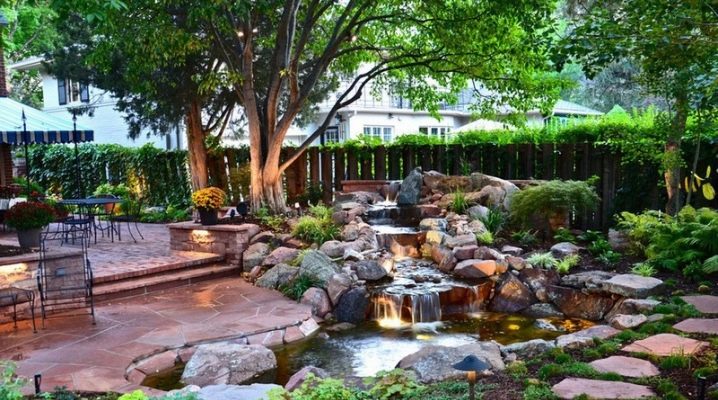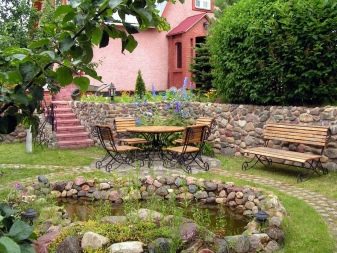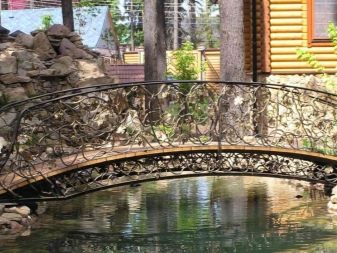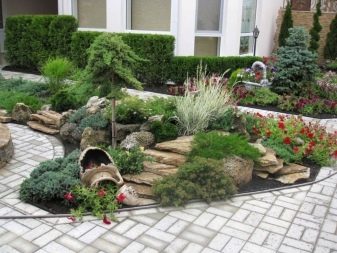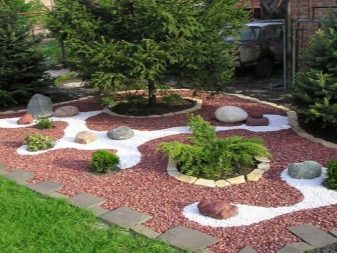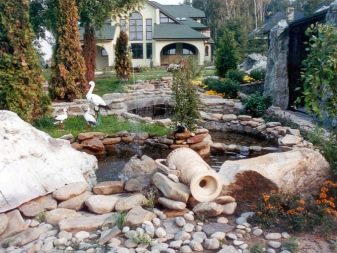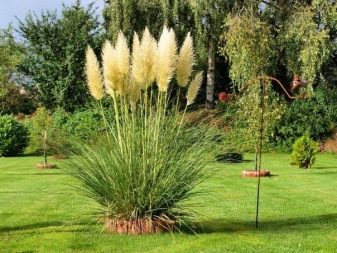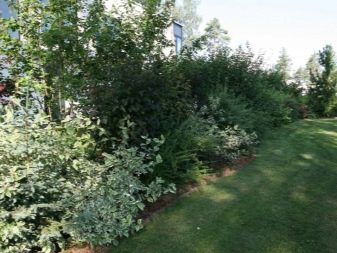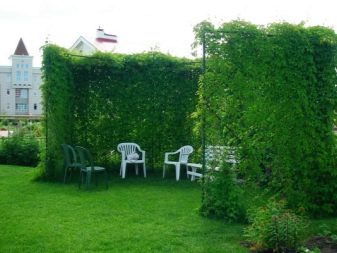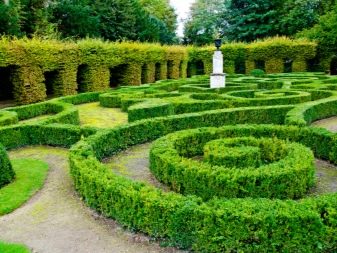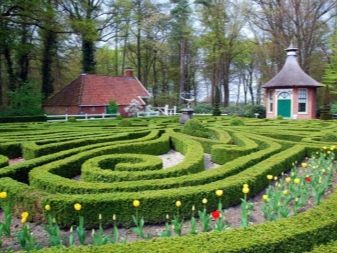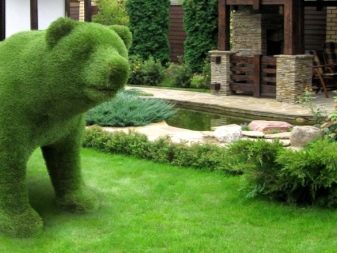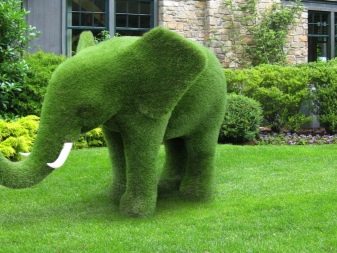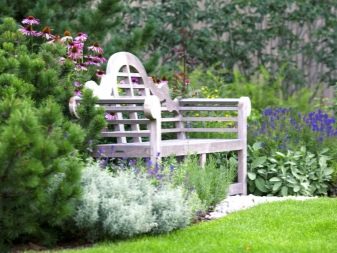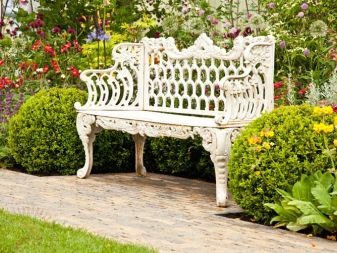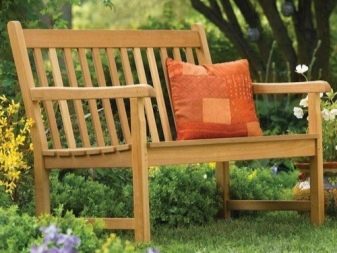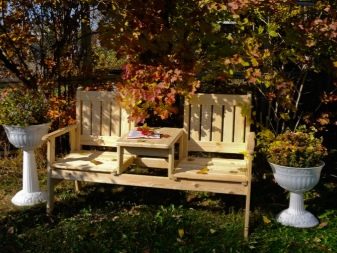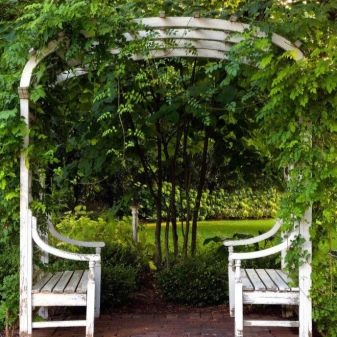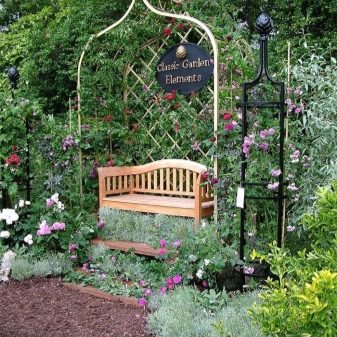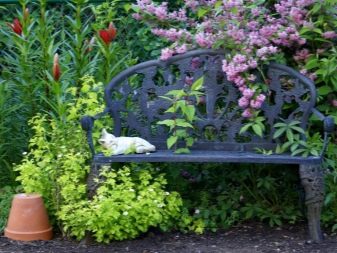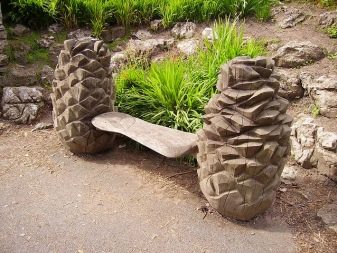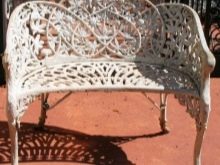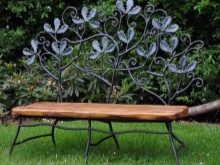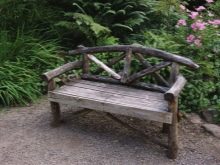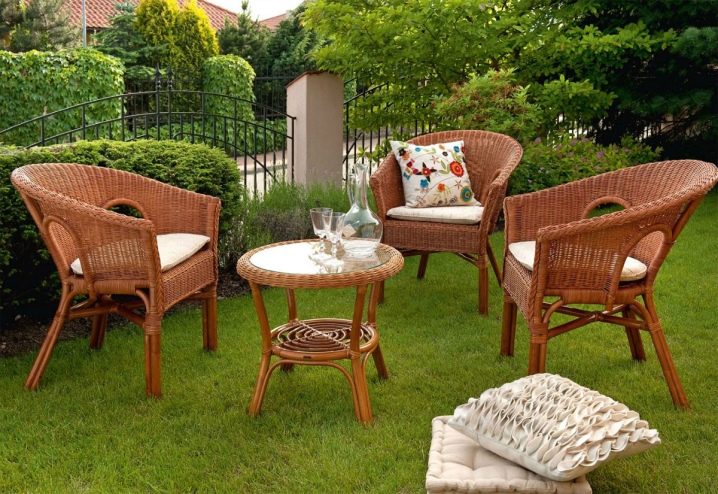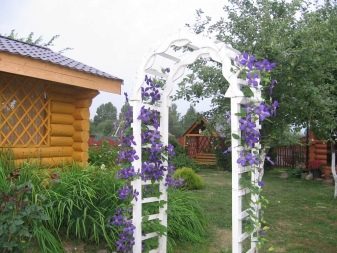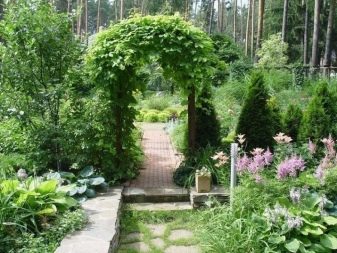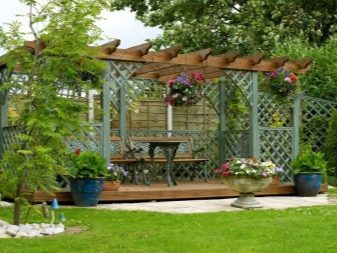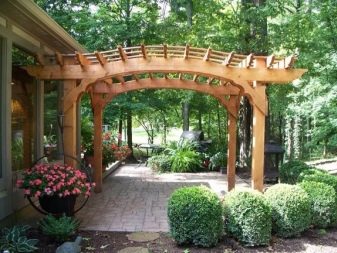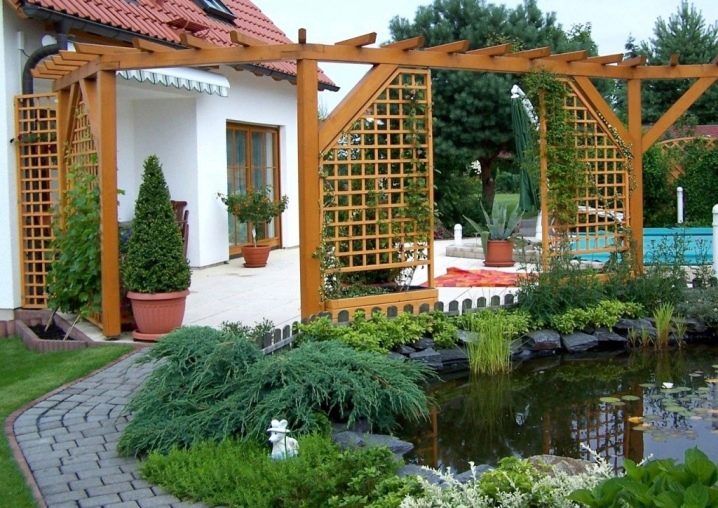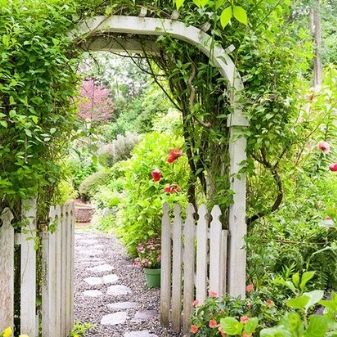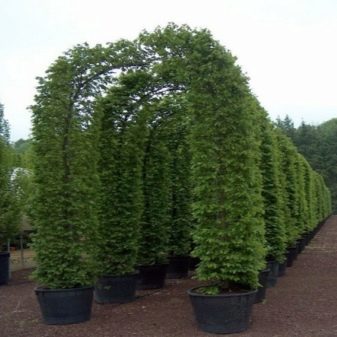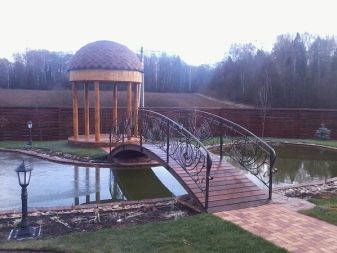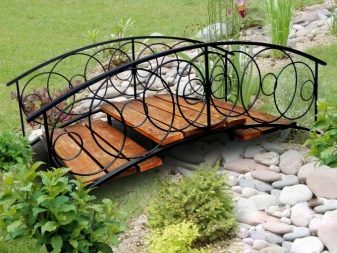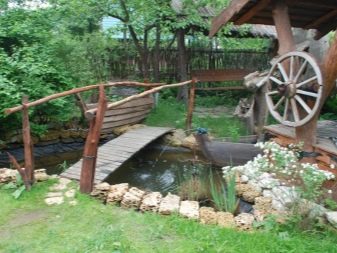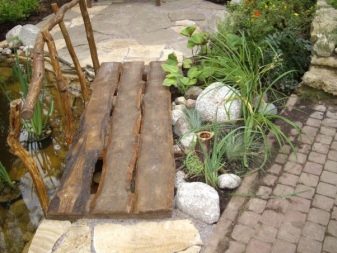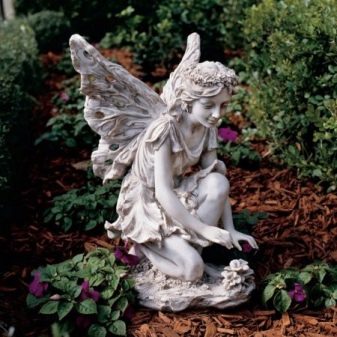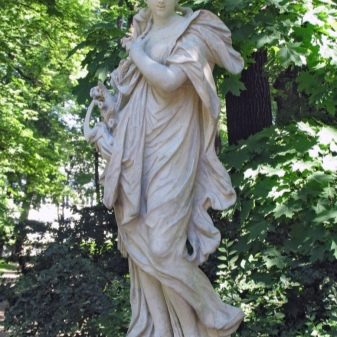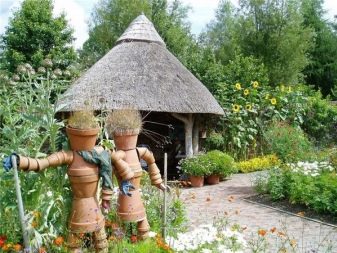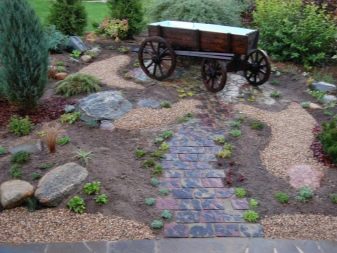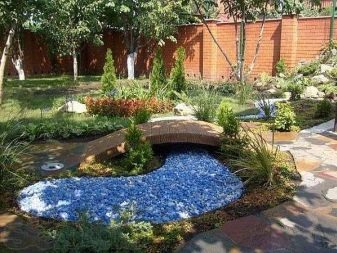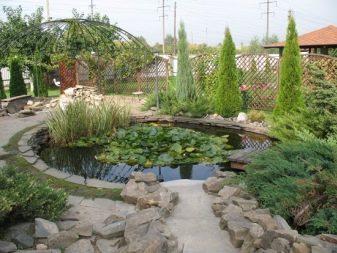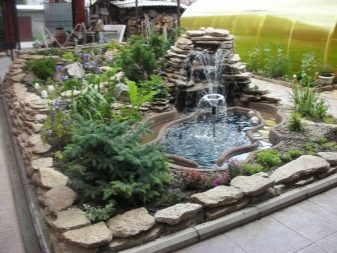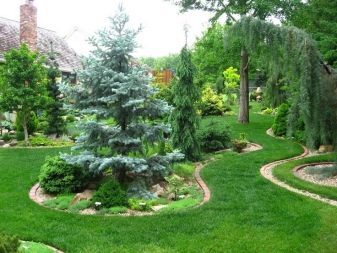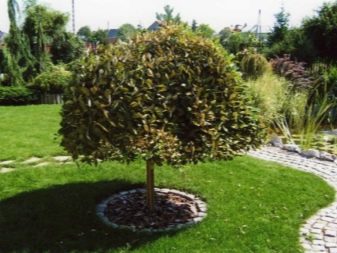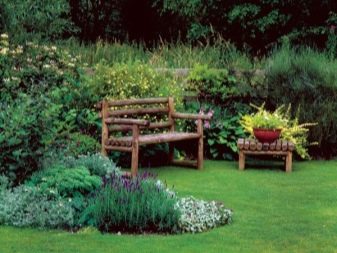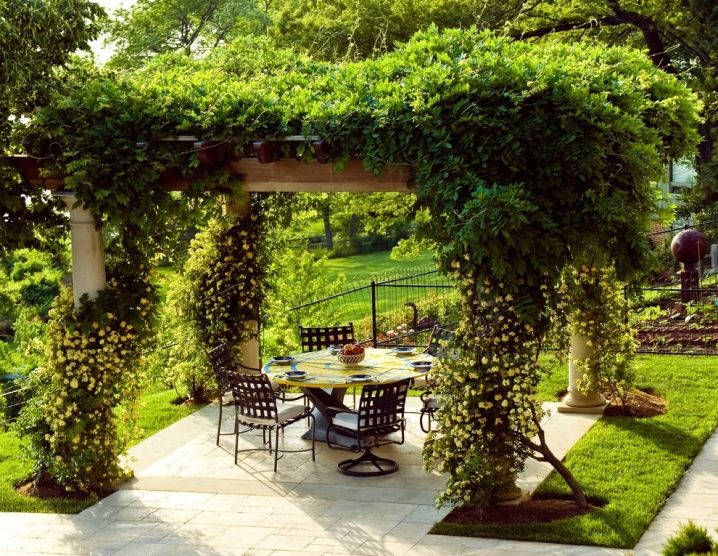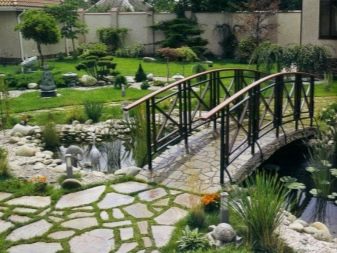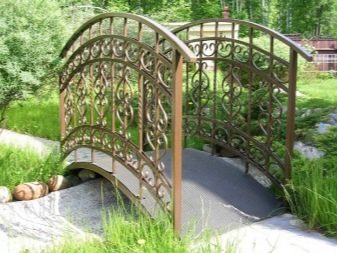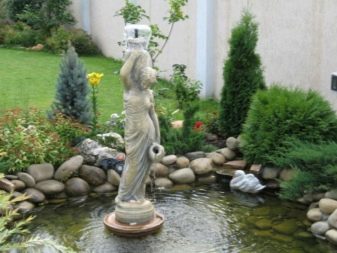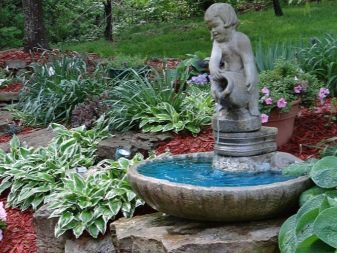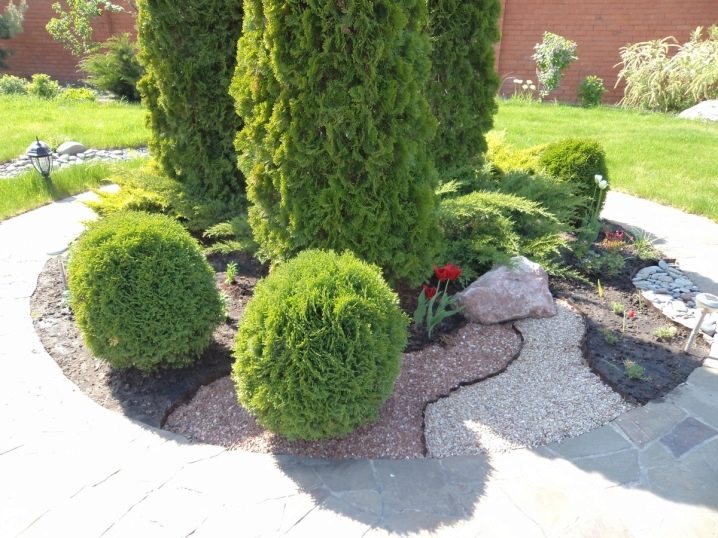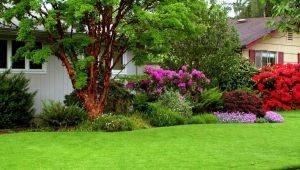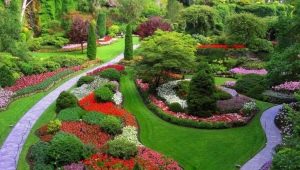Decorative elements in landscape design
Decorative elements are an important component of landscape design. They are large objects, small architectural compositions and small decorative details.
The basic principles of their placement is a harmonious combination with other elements of the composition, compliance with the general theme of design and respect for the natural balance between the elements of wildlife and decorative products.
Kinds
Decorative elements are presented by natural and artificial options.
Natural decor
The first are plants that are presented in the following forms:
- "Tapeworm" - separately growing single shrub or tree, which is the center of attention and the main subject in the composition.
- "Kulisa" - a popular method of decorating the area, which is to create a living wall of trees or shrubs, creating a green curtain and perfectly zoning the space.
- "Labyrinth" - decorating element of plant origin, known since the Renaissance. It is a winding hedge and reaches a height of two meters. For garden plots of a small area, labyrinths are made in the form of borders with a height not exceeding 50 cm.
- Topiary - figure-cropped small-leaved trees and shrubs. Through the formation of the necessary forms, the crown acquires the outlines of animals, household items and sculptures of various subjects.
Artificial elements
Artificial components play a significant role in the formation of landscape design and are presented in a wide variety:
- Bench. This necessary detail of the landscape, in addition to its main function, has a powerful decorating effect. Benches are selected, in accordance with the overall design of the site. The most common products are made of wood with elements of forging, natural stone and plastic. Very effectively look carved surfaces in combination with openwork forged parts, as well as completely wooden models.
By type of construction benches are portable and stationary.Mobile options often have a folding frame and can be cleaned for the time of rain or a long absence. Sod benches and shorn sofas look extraordinary. They are formed from turf or soil and play only a decorative role. For recreation, they are not intended.
The back and armrests of benches are often decorated with climbing plants or pots with beautiful flowers. Benches are installed in recreation areas near attractive objects or in places with a beautiful view. In the gardens of a large area of the bench is placed along the alleys, hedges, arches, under the spreading trees, as well as at the entrance to the house. A popular location is the lawn.
For this, it is sown with grass resistant to mechanical loads and pre-laid with geocase.
Installing a bench near an artificial pond or pool would also be a good decision. White and black benches look good, as well as products from unpainted wood with a clear pattern of wood fibers, lacquered. For country-style, ideal bench of round logs. In the modern style, cast-iron constructions will look harmonious,placed on a white background. Forged bench with a minimum number of ornate elements well stand in a natural style.
Openwork designs with numerous curls and patterns will be a boon for spaces decorated with vintage elements. The benches of raw natural stone are suitable for natural gardens, and in man-made landscapes, smooth or carved models of coarse-grained granite, white marble and quartzite are used. Stone benches are equipped with a warm wooden seat.
- Wicker chairs and benches harmoniously fit into the landscape of space, they are light and aesthetic, stylish and practical. Rattan models look luxurious and, by attractiveness, are comparable to products made from natural wood or stone.
- Arches, pergolas and trellis widely used in modern planning and design of plots. Designs are decorated with climbing plants and are designed to create green corridors, labyrinths and shaded places. They are suitable for zoning space and can act as both an independent decorative element, and as part of the original composition or ensemble.
- Pergola known since the days of ancient Rome, where it was intended to maintain the vine and at the same time created a shaded place to rest. Today it is an indispensable element for the formation of walking galleries and covered alleys in gardens and parks of various thematic focus. Pergolas are made of stone, wood and metal. The design consists of supports with a spherical top, lined up one after another and forming a corridor. The pergola is installed in such a way that the exit from it leads to a beautiful place with a picturesque composition or to a viewing platform, from which a beautiful view opens.
When forming a shaded green corridor with the help of pergolas, shade-tolerant kirkazon, lemongrass, hop and tree-pliers are used. For the design of compositions located in the sun, it is better to use climbing roses, clematis and grapes.
Slightly shaded areas of pergolas can be decorated with creeping hydrangea and actinidia.
- For smaller spaces it is better to use archeshaving original designs, for example, an arch with a wicket. A popular area is the technology of berso, which consists in the formation of hemispheres from a frame or crowns of trees and is used to design indoor alleys.The height of these unique structures can reach several tens of meters. For berso, suitable breeds that can be cut and molded well: linden, grapes, hornbeam and hawthorn.
- Decorative garden bridges able to give the landscape originality and sophistication. They can be both the center of a flower arrangement, and serve as a crossing over a reservoir or ravine. Observation islands are often formed in ponds and in these cases the bridge is irreplaceable. A small curved bridge over a dry stream looks great, its “bed” is lined with medium pebbles, and the “shores” are decorated with plants of coastal species.
- In the landscape gardens in the presence of a large body of water, the bridge is installed on the narrowest part of it, thereby separating shallow water from a deeper place. The bridge can be used to separate the ornamental swamp from the large water or range of coastal plants. With the design of regular gardens, you can install a bridge in the middle of the reservoir and make it a ferry to the gazebo on the opposite bank. For Japanese gardens, you need to use a decorative curved version, and for country style - a straight wooden bridge with wide railings.In the "wild forest" fit simple flooring of perches or simply logs thrown from shore to shore.
- Decorative garden sculptures are an essential attribute of decorating gardens. For the French style fit majestic figures made of marble and bronze, and in the garden of English subjects - ceramic figures and lamps in various colors. In the rocky Japanese landscape should be set compositions of boulders and stone sculptures in combination with Japanese lanterns.
In the design of a rustic style, voluminous wooden figures of birds and animals, as well as sculptures made of natural materials and garden tools are appropriate.
- Dumping is a popular element of landscape design and can be made of decorative chips, pine bark, cedar husks, gravel, pebbles, stone chips, shells, sand and artificial stones. It is used to create rock gardens, rockeries, dumping reservoirs, the formation of paths and flower beds. The advantages include simple installation, availability and long service life of artificial materials. The disadvantage of dumping is quite time-consuming disposal of garbage,short life of organic components such as bark, husks and chips, as well as the need for regular removal of germinating weeds.
- Decorative pond is a worthy decoration of the site and can be made in the form of a pond, a cascading creek with dams, a pool and a fountain. It is located near the house or recreation area. When imitating natural water bodies, it is necessary to achieve maximum similarity with the natural environment, and organically enter the water body in the natural landscape. Water-loving willows and rushes should be planted along the banks, and lotuses and water-lilies in shallow waters. When equipping fountains and pools, one should be guided by the availability of water pipelines and the style of the landscaped area.
Beautiful examples
Competent layout and harmonious combination of natural and decorative elements will create a unique atmosphere and perfectly equip the space.
Decorative objects of natural origin perfectly decorate the landscape and emphasize the aesthetics of plant components.
Garden bench is a great place to relax and stylish decoration of the site.
Pergolas, decorated with climbing plants, are able to create a unique atmosphere of warmth and comfort.
Garden bridges and artificial reservoirs make the site stylish, and the rest is pleasant and comfortable.
Properly selected sculptures will bring the spirit of aristocracy into the space and make the garden luxurious.
Decorative dumping is able to transform the most unpretentious landscape.
How to make a garden decor with your own hands, see the next video.
